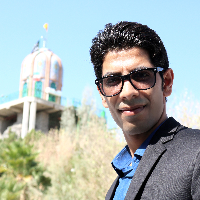Introduction and Analysis of New Found Petrography Motif of Kal-e-Sir, Sir-e-Khordoo and Mohadava (Torqabeh Shandiz -Khorasan)
In archaeology rock art is human-made markings placed on natural surfaces, typically vertical stone surfaces. A high proportion of surviving historic and prehistoric rock art is found in caves or partly enclosed rock shelters; this type also may be called cave art or parietal art. A global phenomenon, rock art is found in many culturally diverse regions of the world. In Iran, evidence of rock art can be seen in most mountainous areas where nomadic or herding life takes place. The collection of ancient lithographs of Kalsir, Sir Khordoo and Mohadava are located in the northeastern region of Iran, in the city of Torqabeh Shandiz. In this area, there are a large number of petroglyphs with various subjects, and the study of these works, considering their antiquity, can reveal the dark aspects of the life of the inhabitants of this area. Since these motifs are related to livelihood, studying these motifs can reconstruct aspects of the life of the primitive inhabitants of this region. This field has a valuable rock art that has been related to each other due to the similarity of the designs. In this study, the study of rock motifs of "Shandiz Torqabeh Collection" has been done with the aim of identifying and addressing the causes and reasons for drawing rock motifs and the content analysis and matching method has been used. The data of this research have been collected from the field survey method and library studies. The results of this study indicate that the motifs are in three groups: human, animal and symbolic.
-
Investigation and analysis of the effect of environmental factors on the formation and distribution of Bronze Age settlements in the Sarakhs basin
*, Davood Behroozifar
Journal of Greate Khorasan, -
Study and analysis of archaeological findings from systematic survey and Determination of privacy Dambigan area of Qasr-e Qand
*, Zohreh Jouzi
Journal of Iran Pre-Islamic Archaeological Essays,



